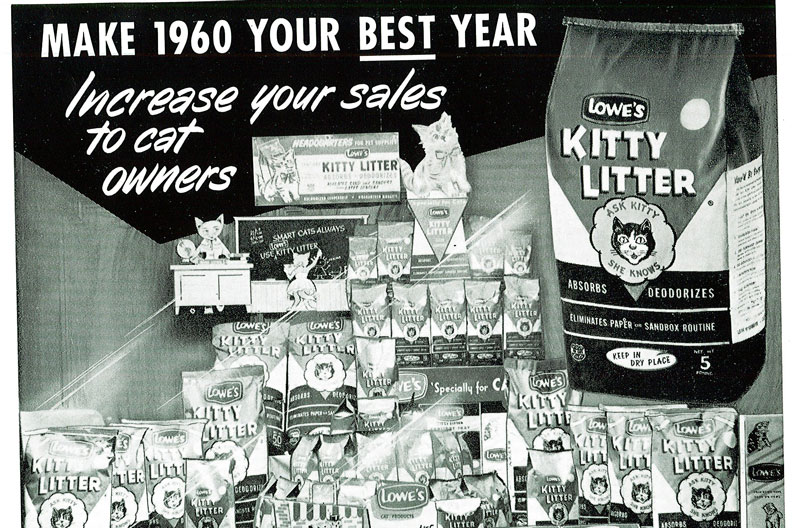Cat Litter: A History

Do you need a multi-part history of cat litter, written by a historian? Actually, yes you do and this is very good. Just one excerpt, on where the heck cat litter comes from.
Before discussing the cultural and social worlds that surround cat litter, it’s important to establish where it comes from. The clay that is used for cat litter can generally be divided into two categories: the more “traditional” absorbent clay made of calcium montmorillonite, and the newer “clumping” litter made from sodium bentonite.
As Simon Moores has written for Industrial Minerals (IM), the “traditional coarse litter” is frequently sourced from southern states like Mississippi, Georgia, and Florida, while sodium bentonite is strip mined in the mid-northwest, in Montana, Wyoming, and South Dakota. Silica, explains Paul Moore for IM, is sometimes also added, although these granules frequently “[perform] more of a decorative than functional role.” Manufacturers then process the clay for optimal absorption by crushing it into smaller granules, drying it to 5% moisture, and adding chemicals for odor.
Before the relative standardization of contemporary cat litter clays, the early decades of the industry required trial and error in product and mining location. Documents from the Edward Lowe Foundation Records dated 1960 and 1961 reveal the Lowe’s attempts to locate suitable mines in Oregon and California, because some clay types—like those for brick and fire—make poor litter box filler.
Although advertisers marketed and continue to market cat litter to women (more on that later), the production of cat litter has been a masculine enterprise. In addition to Ed Lowe, other entrepreneurs found clay mining to be a lucrative endeavor.
In February 1977, the Corpus-Christi Caller Times (of Corpus Christi, Texas) reported on a new mine in Arizona, declaring “There’s gold in litter mine.” The accompanying photo features the mine’s discoverer, a rugged, bearded, long-haired white man crouching on the ground, holding a handful of the clay powder. That same story was reported in the Colorado Springs Gazette in March, entitled, “Faith Revived in American Enterprise As Men Grind Careers in Kitty Litter.” In mining’s moment of trouble, cat owners’ embrace of cat litter saved the day.
As the earlier story points out, cat litter served as a touchstone for the power of entrepreneurship and ingenuity. The black newspaper New York Amsterdam News reported in 1993 on a business lab that mentored more than 90 budding entrepreneurs. The inventions discussed including an “(already patented) disposable kitty litter box.” The entrepreneurial spirit that infused cat litter’s beginnings (to be discussed later) has continued, as the Edward Lowe Foundation—established in 1985 by Ed and his wife Darlene—continues to fund and support entrepreneurship and land stewardship initiatives.


